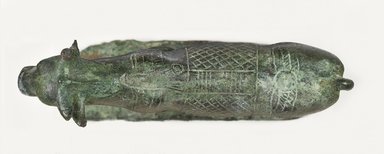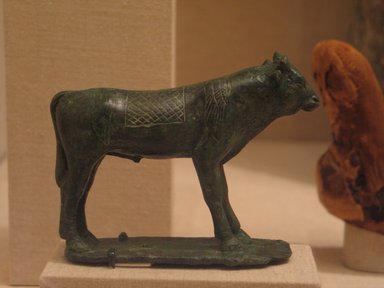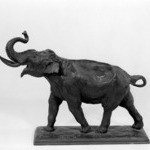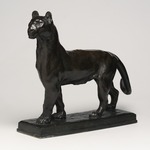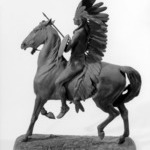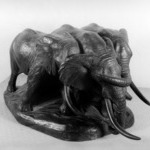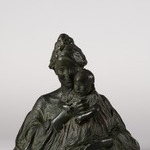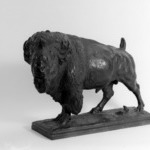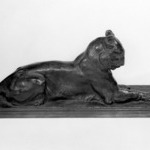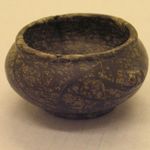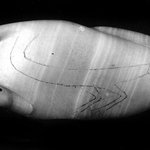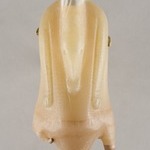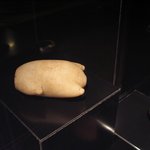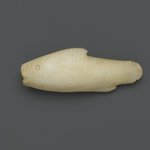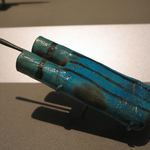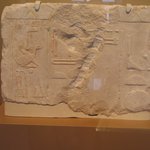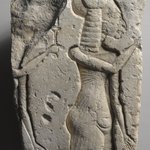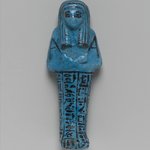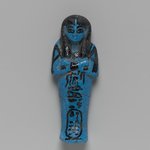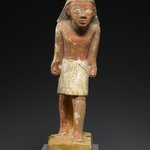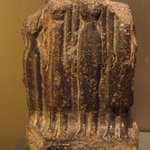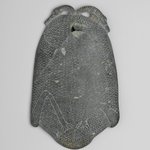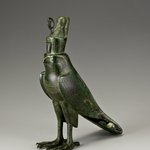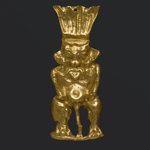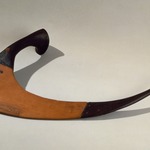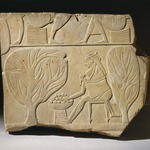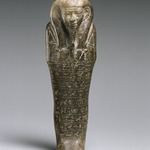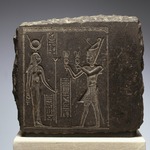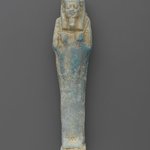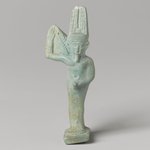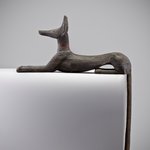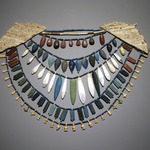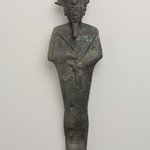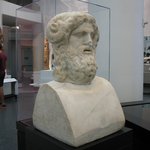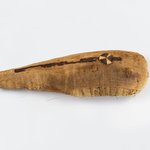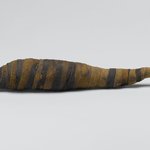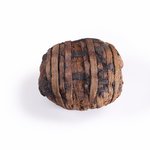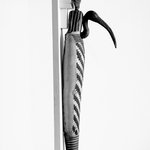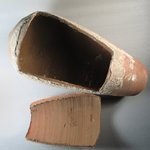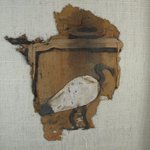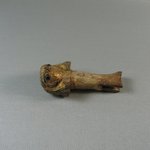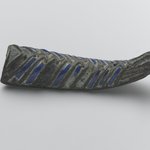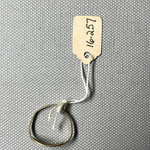

Apis Bull, 664–30 B.C.E. Bronze, 3 3/8 x 1 1/8 x 4 7/16 in. (8.6 x 2.9 x 11.2 cm). Brooklyn Museum, Charles Edwin Wilbour Fund, 05.397. Creative Commons-BY (Photo: Brooklyn Museum (Gavin Ashworth,er), 05.397_Gavin_Ashworth_photograph.jpg)
Apis Bull
Egyptian, Classical, Ancient Near Eastern Art
The Apis bull was the most prominent of the sacred animals. He was a living incarnation of the god Ptah.
The ancient Greek historian Herodotus records how priests discovered each new Apis, recognizing it by its hide, which was “black with a white diamond on the forehead, a likeness of vulture wings on his back, double hairs on its tail, and a scarab-shaped mark under its tongue.” The forehead diamond and vulture wings are clear in this statuette.
The Apis bull then lived as a god in a temple. After its death, the Apis was mummified, mourned, and buried with elaborate ceremony.
The ancient Greek historian Herodotus records how priests discovered each new Apis, recognizing it by its hide, which was “black with a white diamond on the forehead, a likeness of vulture wings on his back, double hairs on its tail, and a scarab-shaped mark under its tongue.” The forehead diamond and vulture wings are clear in this statuette.
The Apis bull then lived as a god in a temple. After its death, the Apis was mummified, mourned, and buried with elaborate ceremony.
MEDIUM
Bronze
DATES
664–30 B.C.E.
DYNASTY
Dynasty 26, or later
PERIOD
Late Period to Ptolemaic Period
DIMENSIONS
3 3/8 x 1 1/8 x 4 7/16 in. (8.6 x 2.9 x 11.2 cm) (show scale)
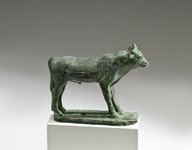


COLLECTIONS
Egyptian, Classical, Ancient Near Eastern Art
ACCESSION NUMBER
05.397
CREDIT LINE
Charles Edwin Wilbour Fund
PROVENANCE
Archaeological provenance not yet documented; by 1905, acquired by Rollin and Feuardent, Paris, France; April 25, 1905, purchased from Rollin and Feuardent by the Brooklyn Museum.
Provenance FAQ
MUSEUM LOCATION
This item is not on view
CAPTION
Apis Bull, 664–30 B.C.E. Bronze, 3 3/8 x 1 1/8 x 4 7/16 in. (8.6 x 2.9 x 11.2 cm). Brooklyn Museum, Charles Edwin Wilbour Fund, 05.397. Creative Commons-BY (Photo: Brooklyn Museum (Gavin Ashworth,er), 05.397_Gavin_Ashworth_photograph.jpg)
IMAGE
side, 05.397_Gavin_Ashworth_photograph.jpg. Brooklyn Museum photograph (Gavin Ashworth, photographer), 2012
"CUR" at the beginning of an image file name means that the image was created by a curatorial staff member. These study images may be digital point-and-shoot photographs, when we don\'t yet have high-quality studio photography, or they may be scans of older negatives, slides, or photographic prints, providing historical documentation of the object.
RIGHTS STATEMENT
Creative Commons-BY
You may download and use Brooklyn Museum images of this three-dimensional work in accordance with a Creative Commons license. Fair use, as understood under the United States Copyright Act, may also apply.
Please include caption information from this page and credit the Brooklyn Museum. If you need a high resolution file, please fill out our online application form (charges apply).
For further information about copyright, we recommend resources at the United States Library of Congress, Cornell University, Copyright and Cultural Institutions: Guidelines for U.S. Libraries, Archives, and Museums, and Copyright Watch.
For more information about the Museum's rights project, including how rights types are assigned, please see our blog posts on copyright.
If you have any information regarding this work and rights to it, please contact copyright@brooklynmuseum.org.
RECORD COMPLETENESS
Not every record you will find here is complete. More information is available for some works than for others, and some entries have been updated more recently. Records are frequently reviewed and revised, and we welcome any additional information you might have.
